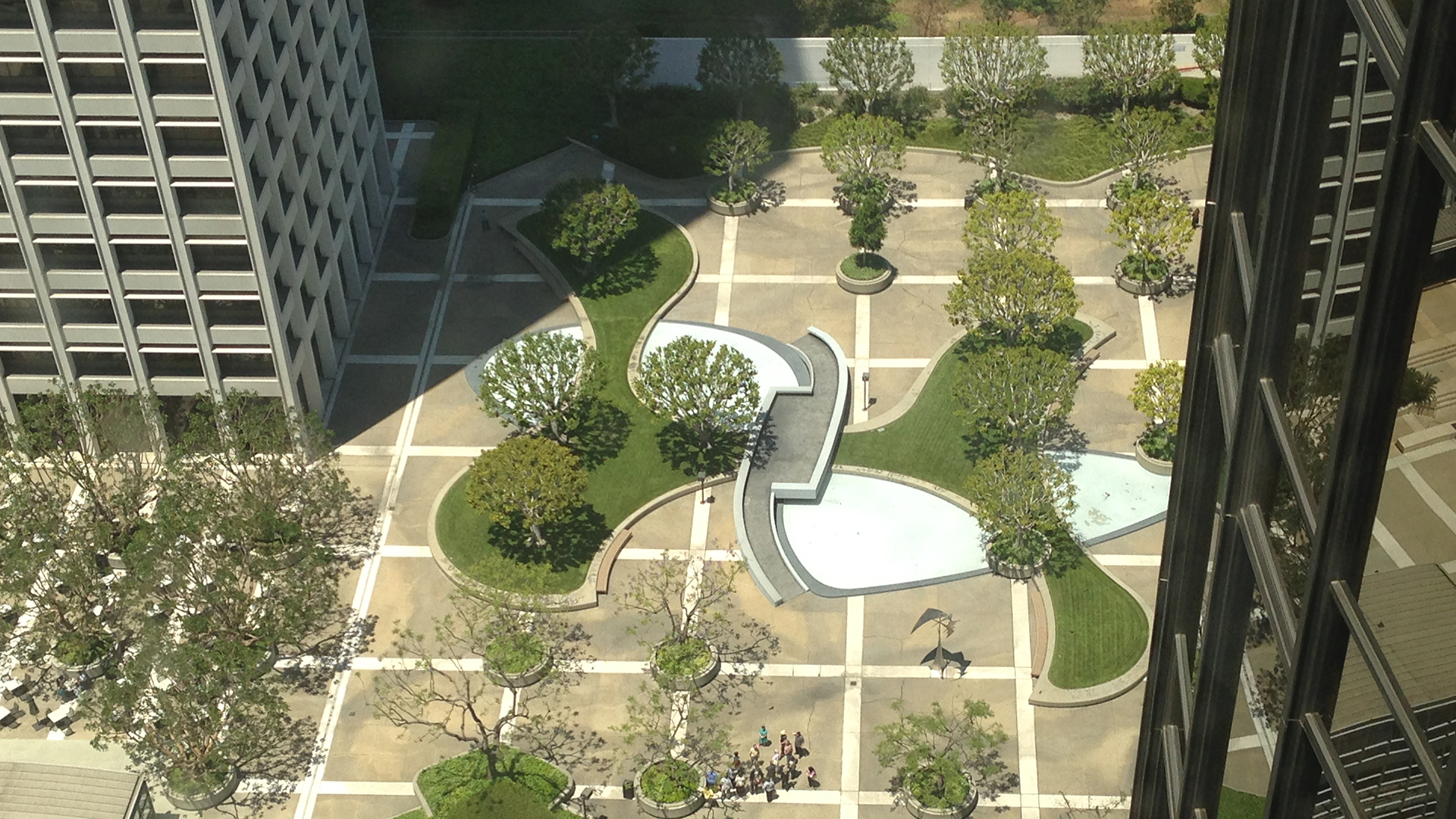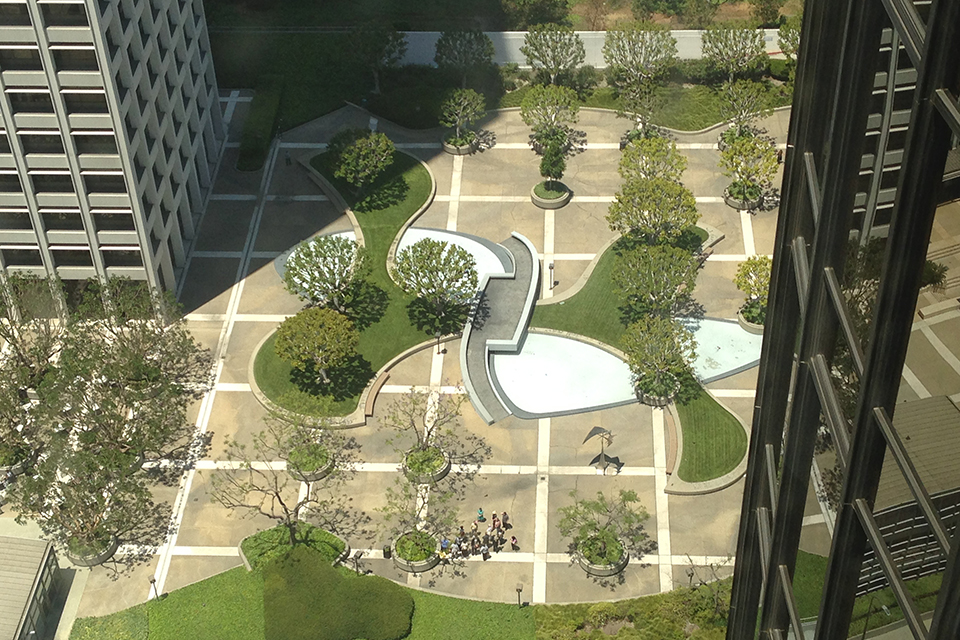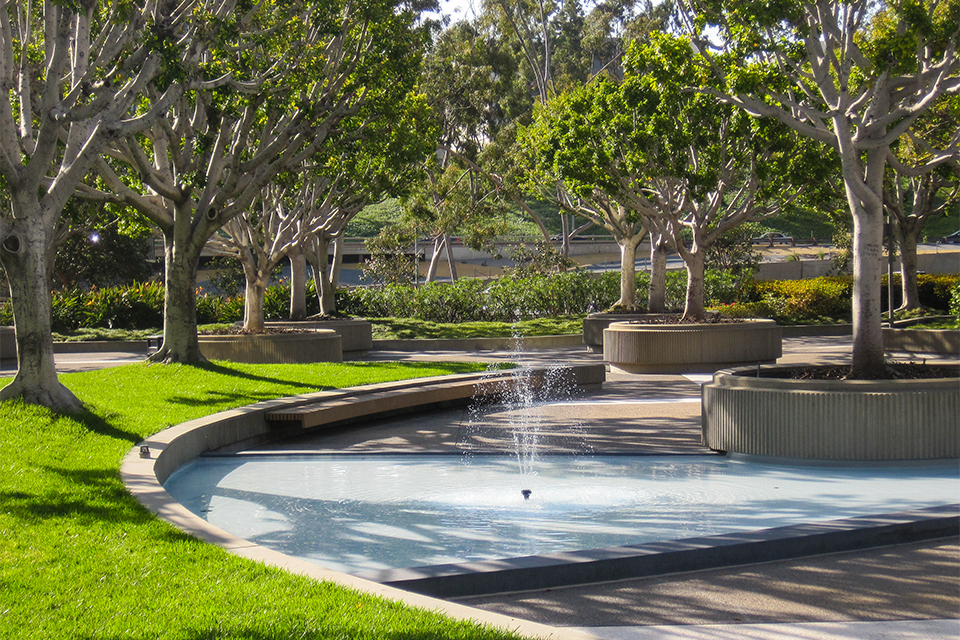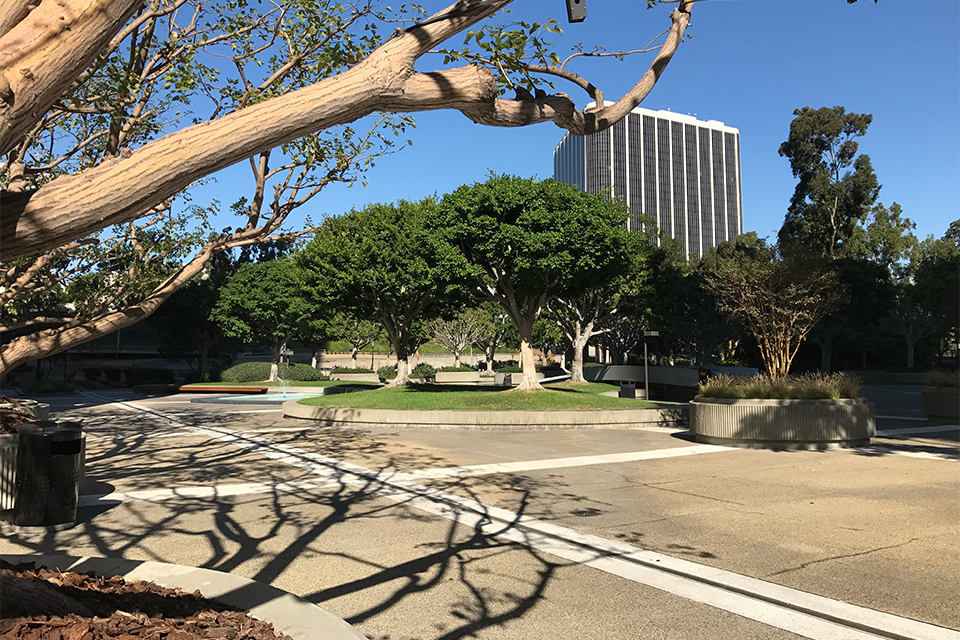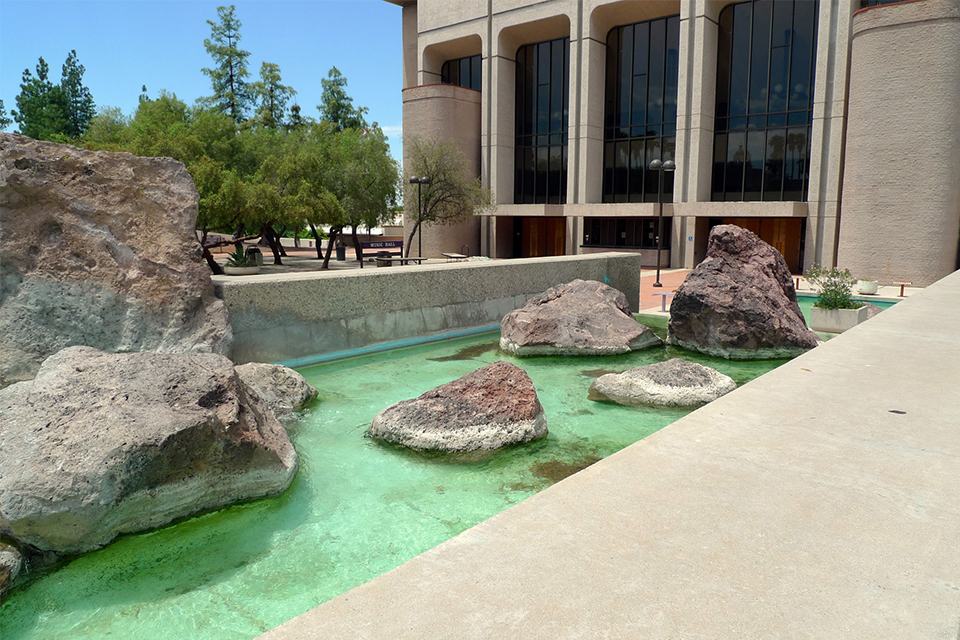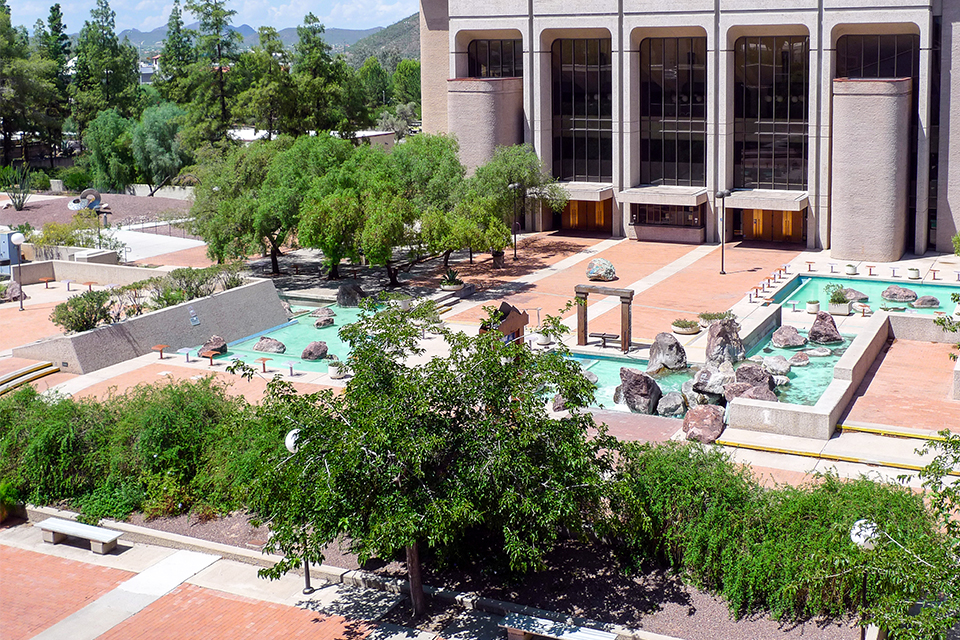In the 1990s to the early 2000s historic resources that were less than 50 years old were dying quiet deaths, including the work and legacy of modernist landscape architects like Garrett Eckbo. During this period, TCLF brought attention to this critical issue, convening two international conferences on the subject of Preserving Modernist Landscape Architecture (1995 and 2002), and publishing the conference proceedings thereafter (Spacemaker Press, 1999 and 2004). Drafted and signed on the occasion of the 2002 conference at Wave Hill and Columbia University in New York City, the Wave Hill Charter was signed by a majority of attendees stating they:
“…believe that the time has come for the American Society of Landscape Architects (ASLA) to develop national guidance and ethics regarding the ongoing preservation and management of nationally significant works of landscape architecture from the recent past. This critical period, from just after World War II until the Bicentennial in 1976, must be addressed before it is too late. To allow seminal works of landscape architecture to be destroyed or altered without any informed public discourse edits out a significant chapter in the evolution of our profession. Therefore, we, the undersigned, ask that the ASLA develop a stewardship ethos for addressing the documentation, treatment, and management of this unsung and highly vulnerable aspect of our profession’s heritage.”
In addition to the places, the pioneering individuals – Eckbo, Lawrence Halprin, Dan Kiley, Robert Royston, Cornelia Hahn Oberlander, and John Ormsbee Simonds, among others – were featured in TCLF books and publications (Pioneers of American Landscapes Design, 1999; Shaping the American Landscape, 2009; and Shaping the Post War Landscape, 2018), helping to create an “informed public discourse.”
In tandem with these publications, the roll out strategy for Shaping the American Landscape included a series of ten regional conferences held from 2009 to 2011. This included such regionally nuanced themes as Landscapes for Living: Post War Years in California (October 2009) and Post War Years in Los Angeles (April 2011). Both conferences included former colleagues/employees of Eckbo (including Walter Hood, Ken Kay, and Kenneth Nakaba); tours of his landscapes (e.g., Union Bank, Los Angeles); and, in Berkeley, an exhibition and reception that included Eckbo’s original plans and drawings from Special Collections. Taken together, the idea was to make the legacy of pioneering modernists like Eckbo visible and valued, resulting in successful public engagement and advocacy.
Created in the early 1970s when downtown Tucson underwent major urban renewal, the convention center (formerly the Tucson Community Center) is a three-building complex that includes an arena, music hall, theater, as well as exhibit halls, meeting rooms, and ballrooms. The city commissioned Eckbo of Eckbo, Dean, Austin and Williams (later known as EDAW) to design a public space that would unify the buildings with a central plaza and engage passers-by. Opened in three stages between 1971 and 1974, the project consists of both formal and informal components. At approximately 5.75 acres, the landscape represents one of the largest public open spaces in downtown Tucson.
Background
With the center, Eckbo applied design principles found in many of his civic projects: generous space between buildings to encourage group gathering, the use of water as a unifying focal element that also animated the public spaces, and the incorporation of shade trees that reflected the regional palette. The Tucson Convention Center is the second of three landscapes in the area designed by Eckbo, which eventually became a linked chain of public spaces.
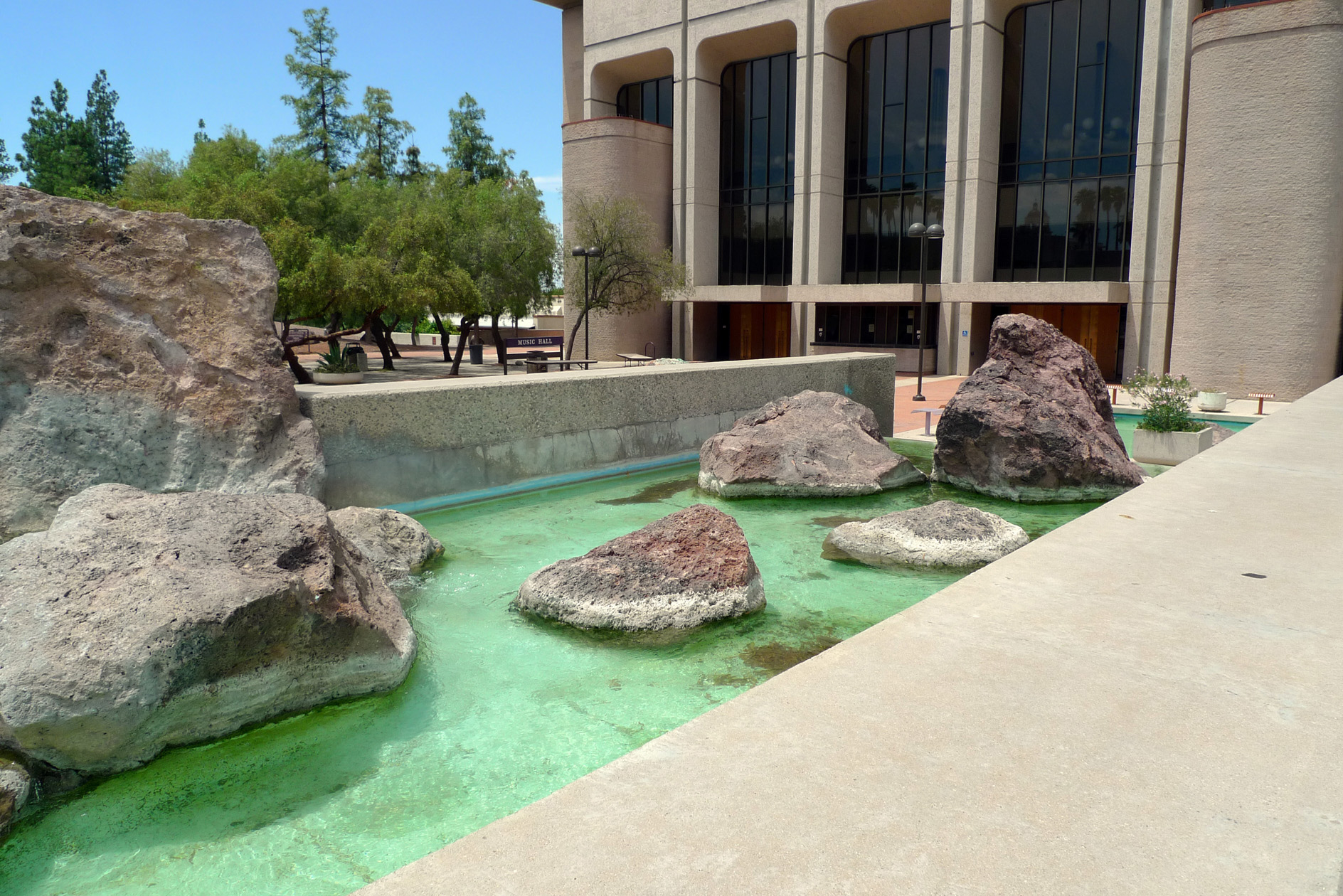 Tuscon Convention Center, Tuscon, AZ, 2010. Photo by Emily Yetman.
Tuscon Convention Center, Tuscon, AZ, 2010. Photo by Emily Yetman.
Eckbo’s design for the center drew inspiration from the surrounding desert and pine-covered Santa Catalina Mountains to bring the nearby natural context into the city center. A series of connected concrete terraces feature shallow pools edged with boulders, which link together gridded groves of trees. The water and rock formations create a series of waterfalls, some smooth and sheet-like, others evoking river rapids. While the attraction of the rushing water is a magnet to children in the hot, dry environment, the terraces provide a setting for outdoor performances and informal gatherings. The project won a National Honor Award from the American Society of Landscape Architects in 1978.
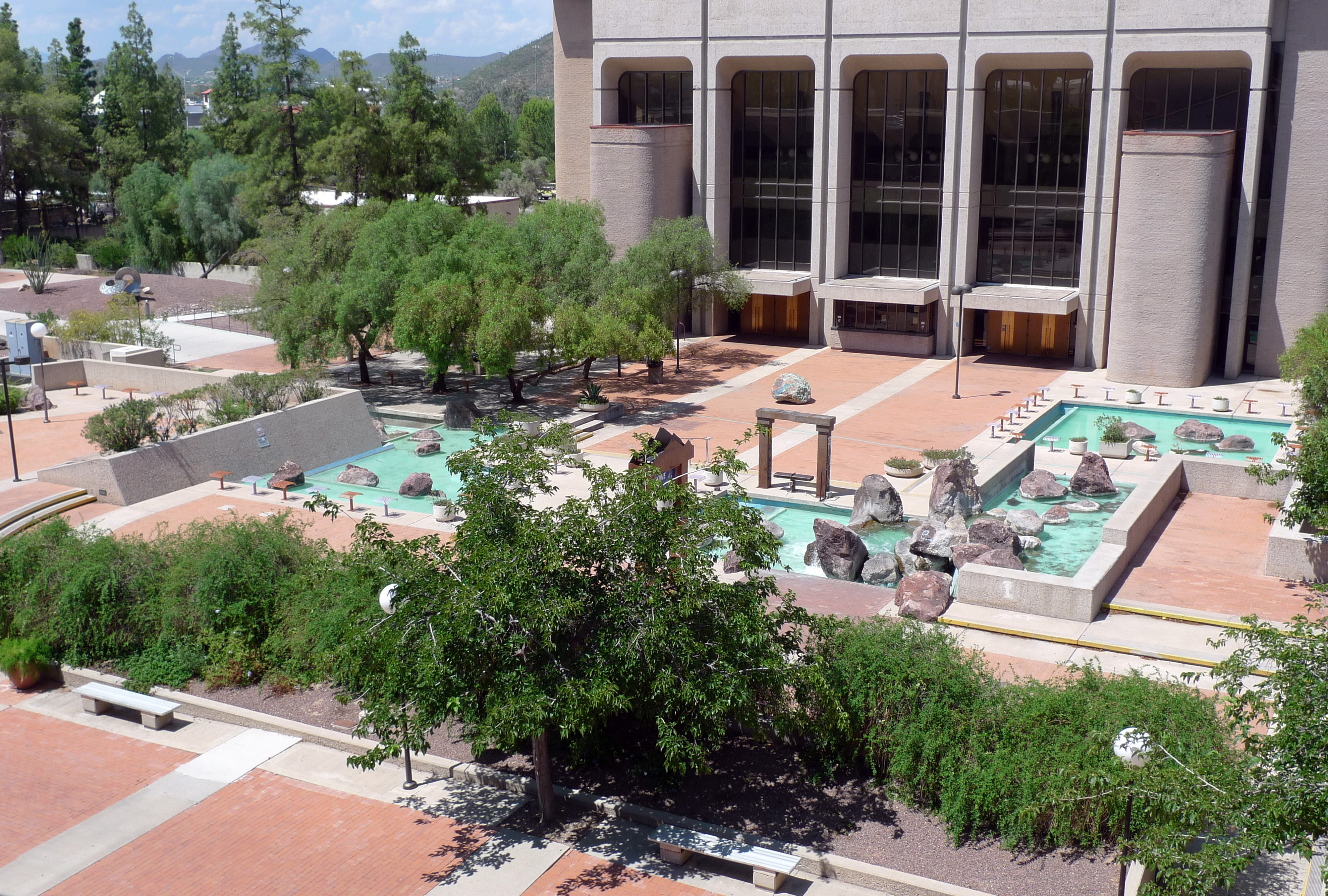
Tuscon Convention Center, Tuscon, AZ, 2010. Photo by Emily Yetman.
Advocacy and Engagement for the Tuscon Convention Center
An unappreciated masterwork, the site first came under threat in 2010, when the city considered significant modifications to the plaza, which suffered from years of deferred maintenance and some unsympathetic changes (for example, the fountains had been repainted turquoise, in place of the natural tones Eckbo specified, and brightly colored metal chairs were bolted into the concrete in various locations). Several pools were in disrepair and their outdated technology made it difficult to keep them functioning. TCLF enrolled the Tucson Convention Center in its Landslide program of at-risk landscapes in August of that year, urging the public to contact the Tucson City Council and City Manager.
Despite the growing awareness of the significance of modernist landscapes that resulted from TCLF’s conferences and publications, as well as both local and national opposition to the proposed redesign of the Tucson Convention Center, its status remained precarious, with no policy in place to guide historic landscape management. In early 2012 the Director of the City of Tucson Department of Parks and Recreation submitted a Deaccession Request for the Convention Center landscape to the Tucson Pima Arts Council (TPAC). This initiated a formal review process, conducted by TPAC on behalf of the City of Tucson. To inform the process, the Tucson Historic Preservation Foundation oversaw the preparation of a Historic Landscape Conservation Master Plan, with Helen Erickson as principal author. Erickson also drafted a National Register of Historic Places nomination (the first for an Eckbo-designed landscape), and, with landscape architect Darlene Showalter, undertook an Historic American Landscapes Survey (HALS) documentation effort. A citizen’s group, TCC Today, formed to advocate for the site’s protection, joining forces with the Tucson Historic Preservation Foundation, the University of Arizona, and Pima Community College as the plans to significantly modify the site remained under consideration by the city.
During the spring of 2015 the city contracted with the Drachman Institute of the University of Arizona to document, assess, and interpret the Eckbo-designed landscape. As part of this project laser technology was used to scan the landscape, and a class in computer-assisted design at nearby Pima Community College, along with the student Revit Club, used the results to construct a three-dimensional model. Working in tandem, a second class at the university outlined preservation-planning issues, identified stakeholders, and prepared a plan to provide guidance to the City in matters of public engagement, programming, and stewardship. TCLF continued to actively monitor and bring attention to the site, providing updates on its website and via bi-weekly e-newsletters, directing the public to support local advocacy groups.
On September 8, 2015, the Tucson Community Center Historic District was listed in the National Register of Historic Places; the nomination included a letter of support from TCLF. In 2018 a series of rehabilitation projects totaling more than $125 million were announced by Rio Nuevo, downtown Tucson’s public-private partnership for civic development. Rio Nuevo directly referenced TCLF’s analysis of the site in its November 2018 budget, which included eight million dollars earmarked for the rehabilitation and restoration of the Eckbo-designed landscape. The multi-phase project was completed by Sundt Construction and Swaim Architects in 2022.
Located downtown at Fifth and Figueroa Streets and adjacent to the Harbor Freeway, this 2.25-acre paved plaza, originally called Union Bank Square, is situated three stories above street level and was designed by Eckbo in 1968. Nestled around the 40-story Union Bank Tower designed by Harrison + Abramowitz of New York and Albert C. Martin Associates of Los Angeles, the plaza was intended to be experienced by pedestrians and to be viewed from above by Union Bank employees. An exemplar of Eckbo’s modernist design principles, the plaza is situated atop the commercial court and parking structure that comprise the base of the office tower. It can be accessed at multiple points: a pedestrian bridge from the neighboring Bonaventure Hotel; a monumental staircase and elevator at Fifth Street; and, by discrete staircases near Harbor Freeway. Eckbo believed this elevated position would better provide a “quiet, shaded, water-cooled retreat from the noise, confusion, and austerity of downtown streets.”
Background
Occupying the northeastern part of the site, the plaza is formed by a circle inscribed within the lot’s rectilinear boundary and is visually organized as a grid painted into the aggregate paving. The grid is disrupted by biomorphic and organic forms that comprise a series of sculpted grass islands surrounded by water and linked by a central bridge, the whole ensemble recalling paintings by Joan Miró.
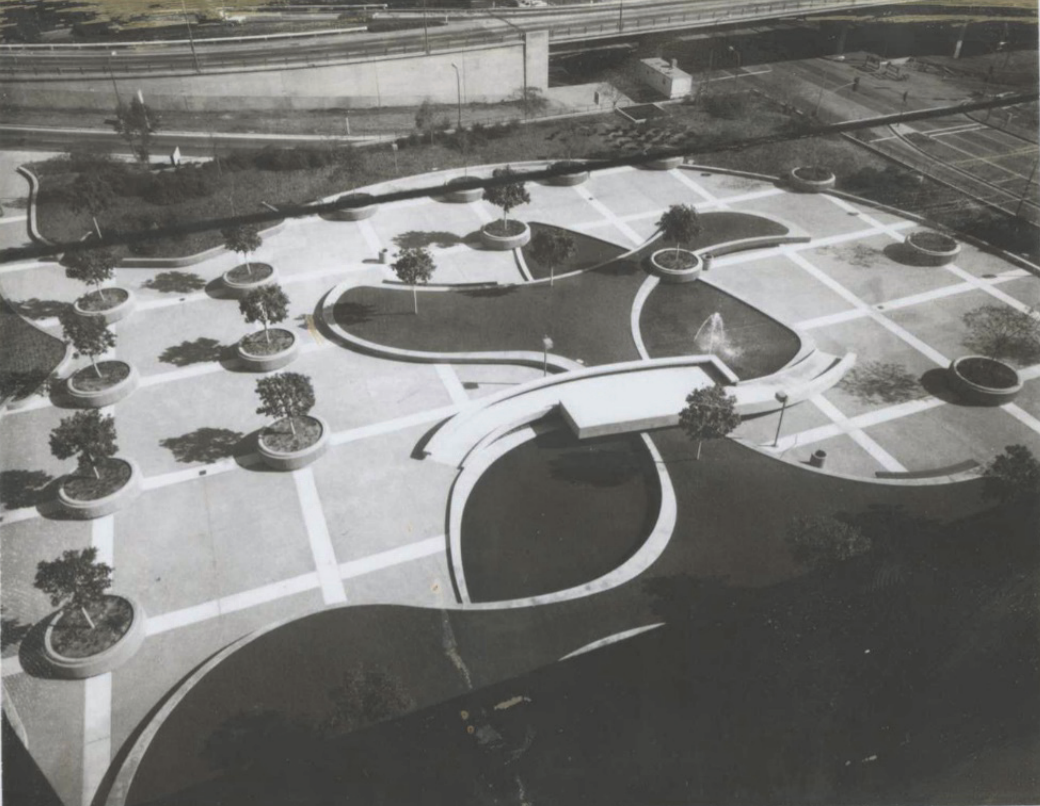 Union Bank Plaza, Los Angeles, CA, Date Unknown. Image courtesy HALS.
Union Bank Plaza, Los Angeles, CA, Date Unknown. Image courtesy HALS.
The water forms a calm, still surface, except for two small jets. Circular concrete planter boxes containing individual trees are placed at the intersections of the grid. This regimented arrangement of trees transitions to irregular plantings and lawn areas around the perimeter of the plaza. The principal tree species are coast coral, ficus, jacaranda, and sycamore. Framing and drawing attention to the water features is a grove of trees planted on a grid, which corresponds to the structural columns below. Notably, the design evokes a Gestalten interplay between several forms and textures—juxtaposing the rigid verticality of the 40-story tower with the biomorphic forms of the plaza’s ground plane, and the softness of plantings with the hardness of the concrete elements. Eckbo’s original design called for a series of sculptural forms by Bella Feldmand, but these were never realized. In 1970 Jerome Kirk's commissioned piece Aquarius was dedicated in their place.
Union Bank Square was included in TCLF’s What’s Out There Los Angeles guidebook and October 2013 What’s Out There Weekend Los Angeles, a weekend of free, publicly accessible tours that further elevated awareness of the area’s distinct and innovative design heritage, including modernist jewels by Eckbo and others.
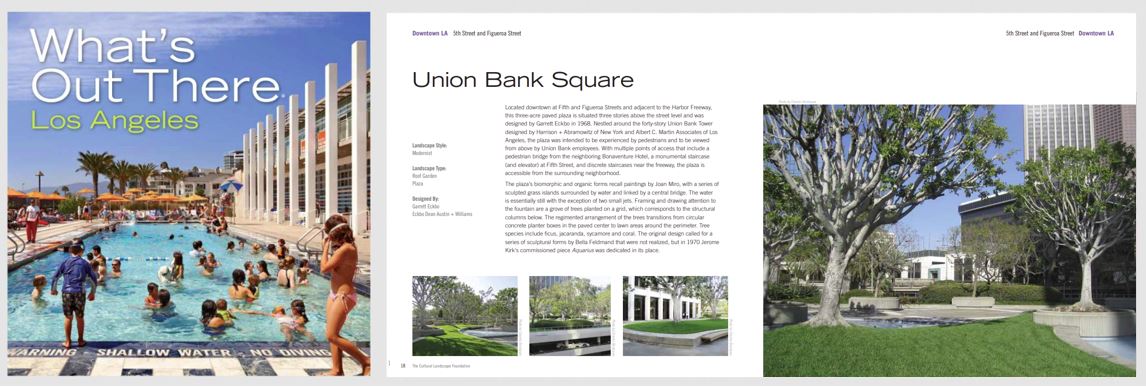 What’s Out There Los Angeles guidebook, 2013. Image courtesy The Cultural Landscape Foundation.
What’s Out There Los Angeles guidebook, 2013. Image courtesy The Cultural Landscape Foundation.
The growing awareness of the historical significance of Eckbo’s landscapes is evident in an assessment conducted in 2015 as part of the National Park Service’s Historic American Landscapes Survey (HALS), which concluded that the plaza was “in good condition,” adding that it is “well patronized on business days, with built elements remaining largely as they were when first constructed… Cracks in the concrete are visible, and the wood benches need repainting, but otherwise, the materials of the original construction are holding up well to the environment and usage patterns.” The HALS report also included the following statement regarding the plaza's significance:
The Union Bank Plaza is an intact artifact of the American Modernist movement as interpreted via landscape architecture in an urban context specifically, as opposed to the more well-known case studies from the residential realm. The plaza is also an excellent and publicly accessible representation of Garrett Eckbo's thesis on landscape architecture, and his underlying pursuit of a new visual and spatial vocabulary for organizing exterior space.
Following this assessment of significance, the plaza’s owner, KBS Realty Advisors, announced in July 2020 that it would undergo a twenty-million-dollar “renovation.” The proposed project would involve the introduction of retail buildings and changes to the plaza including new fire pits and outdoor seating, designed to transform the plaza and its surrounding buildings into a “live-work-play” center.
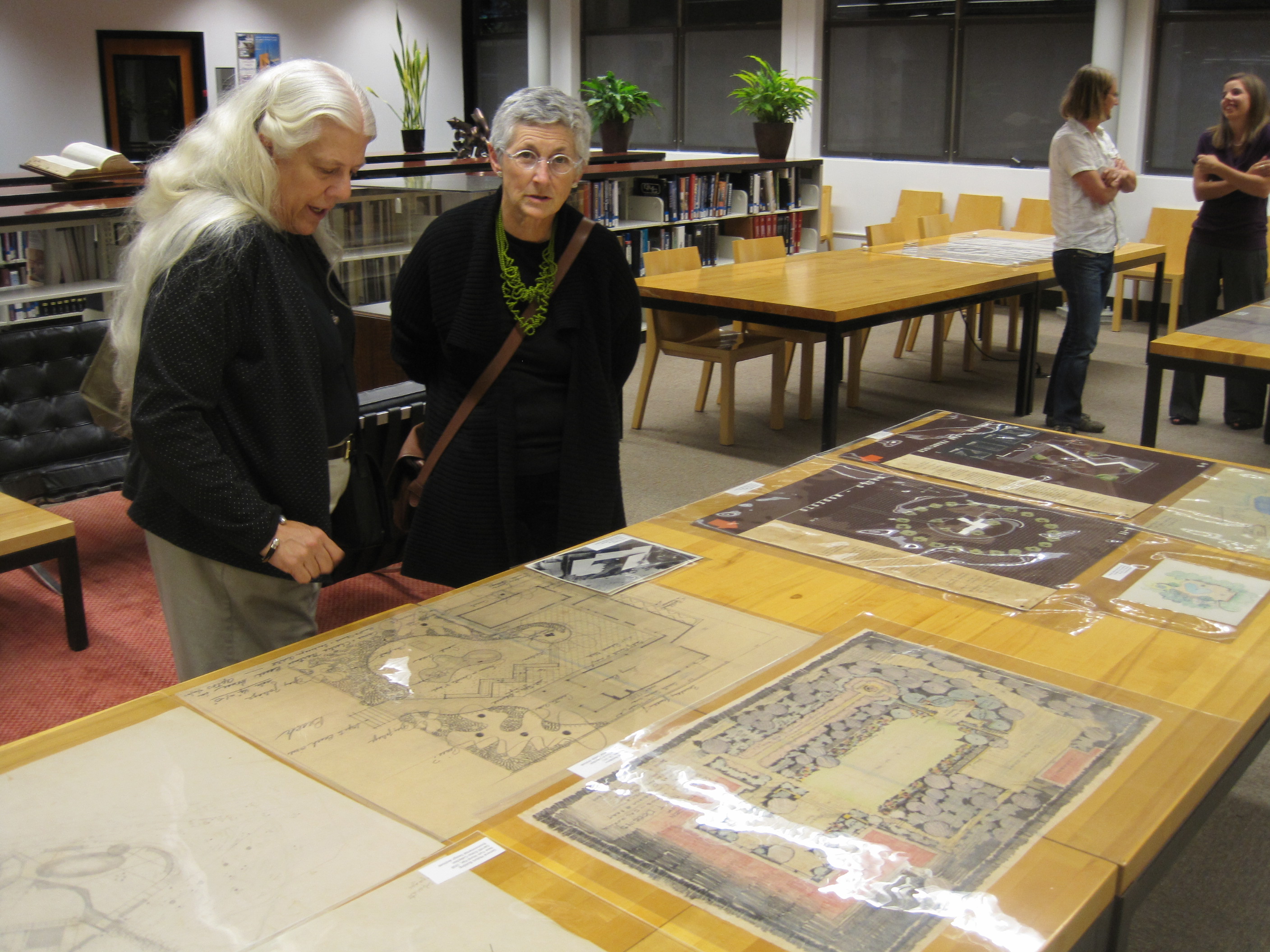
Attendees view Eckbo plans at Landscapes for Living: Post War Years in Northern California at University of California, Berkeley, CA, 2009. Image courtesy The Cultural Landscape Foundation.
Advocacy and Engagement for Union Bank Plaza
Working in collaboration with the Los Angeles Conservancy’s director of advocacy, Adrian Scott Fine, TCLF enrolled the Modernist landscape in its Landslide program of at-risk landscapes in July 2019. The conservancy simultaneously submitted a nomination to the Cultural Heritage Commission seeking local landmark designation (Historic-Cultural Monument) for the tower and plaza. On August 15, 2019, the five member Cultural Heritage Commission voted unanimously to confer landmark status on Union Bank Plaza, a decision that KBS Realty ultimately supported.
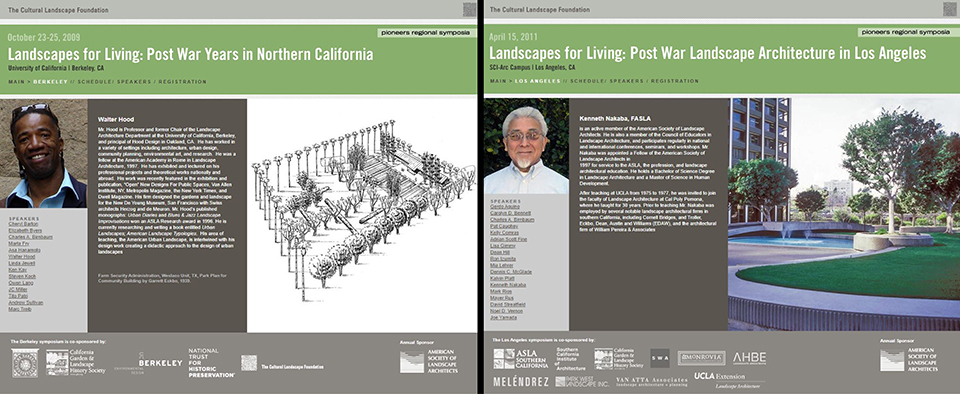 Speaker profiles for Walter Hood (left), 2009, and Kenneth Nakaba, FASLA (right), 2011, at respective Landscapes for Living symposia. Images courtesy The Cultural Landscape Foundation.
Speaker profiles for Walter Hood (left), 2009, and Kenneth Nakaba, FASLA (right), 2011, at respective Landscapes for Living symposia. Images courtesy The Cultural Landscape Foundation.
On February 26, 2020, a Los Angeles City Council vote ratified the Cultural Heritage Commission’s recommendation and made Union Bank Plaza the first downtown skyscraper, inclusive of its Eckbo-designed plaza, to be designated a Historic-Cultural Monument. HLW International is undertaking the architecture, landscape design, and interior design elements of the renovation. In March 2023 KBS sold the Union Bank Plaza and tower to Waterbridge Capital for less than half of what was expected. Fortunately, the plaza’s Historic-Cultural Monument designation will help protect this treasured Modernist landscape, and advocates such as the Los Angeles Conservancy and TCLF remain vigilant.
Selected Resources
“Significant Steps Forward for Eckbo's Tucson Commission,” Oct 02, 2012
“Rehabilitation of Eckbo’s Tucson Commission Begins,” Jan 20, 2015
“More Good News for Garrett Eckbo's Modernist Plaza in Tucson,” Sep 21, 2015
“Eckbo’s Union Bank Plaza Landscape is SAVED!,” Feb 28, 2020

-
Union Bank Square, Los Angeles, CA, 2017. Photo by Charles A. Birnbaum, courtesy The Cultural Landscape Foundation.
